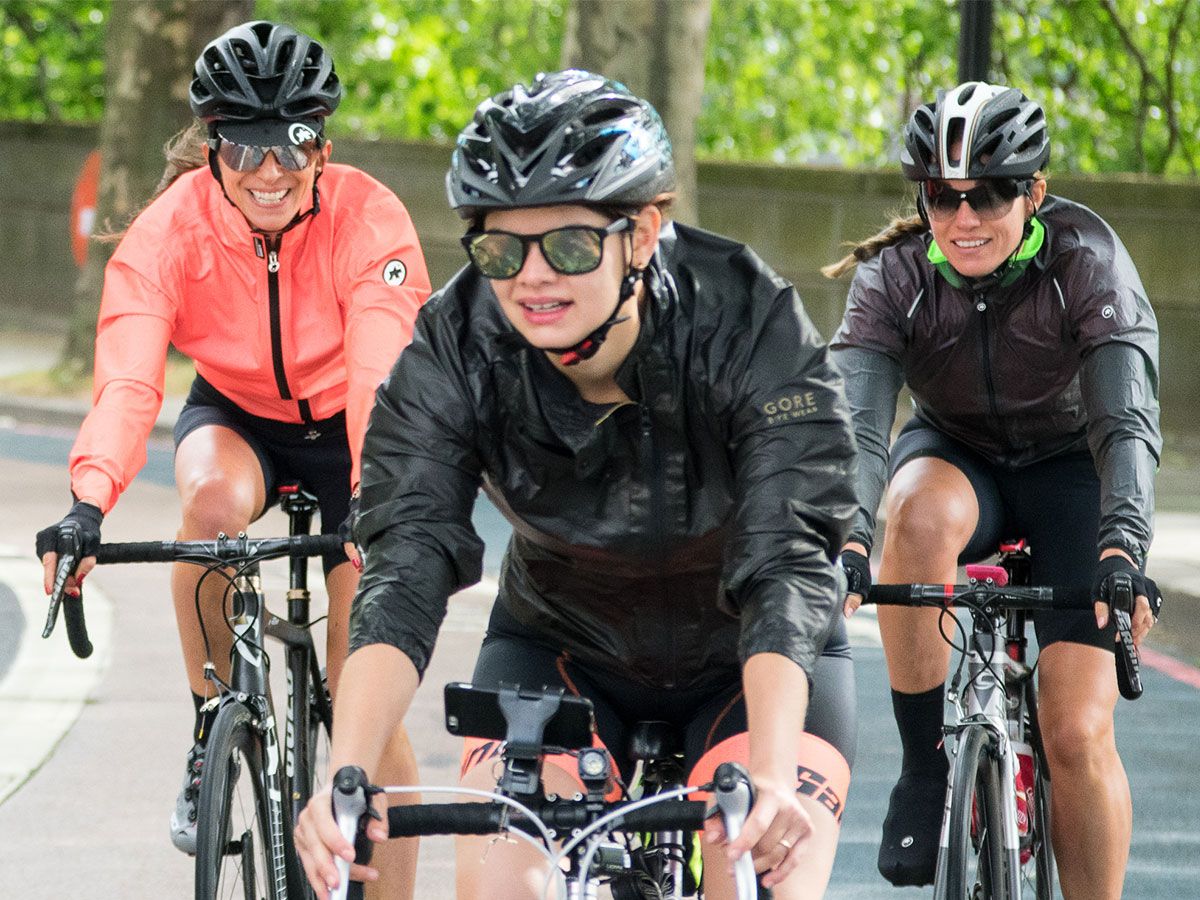
“It’s as easy as riding a bike.”
For most of us, since we've been children it has been easy to understand the basics of riding a bike. Stay upright and pedal forward. But just knowing this doesn’t make you an expert. There are many skills to be learnt in road cycling that will help you to become a more complete cyclist.
Some of these skills are basic, some are a little bit more difficult. Mastering each of them will take time, patience and lots of practise. Which is a wonderful excuse to go out and ride your bike.
Braking
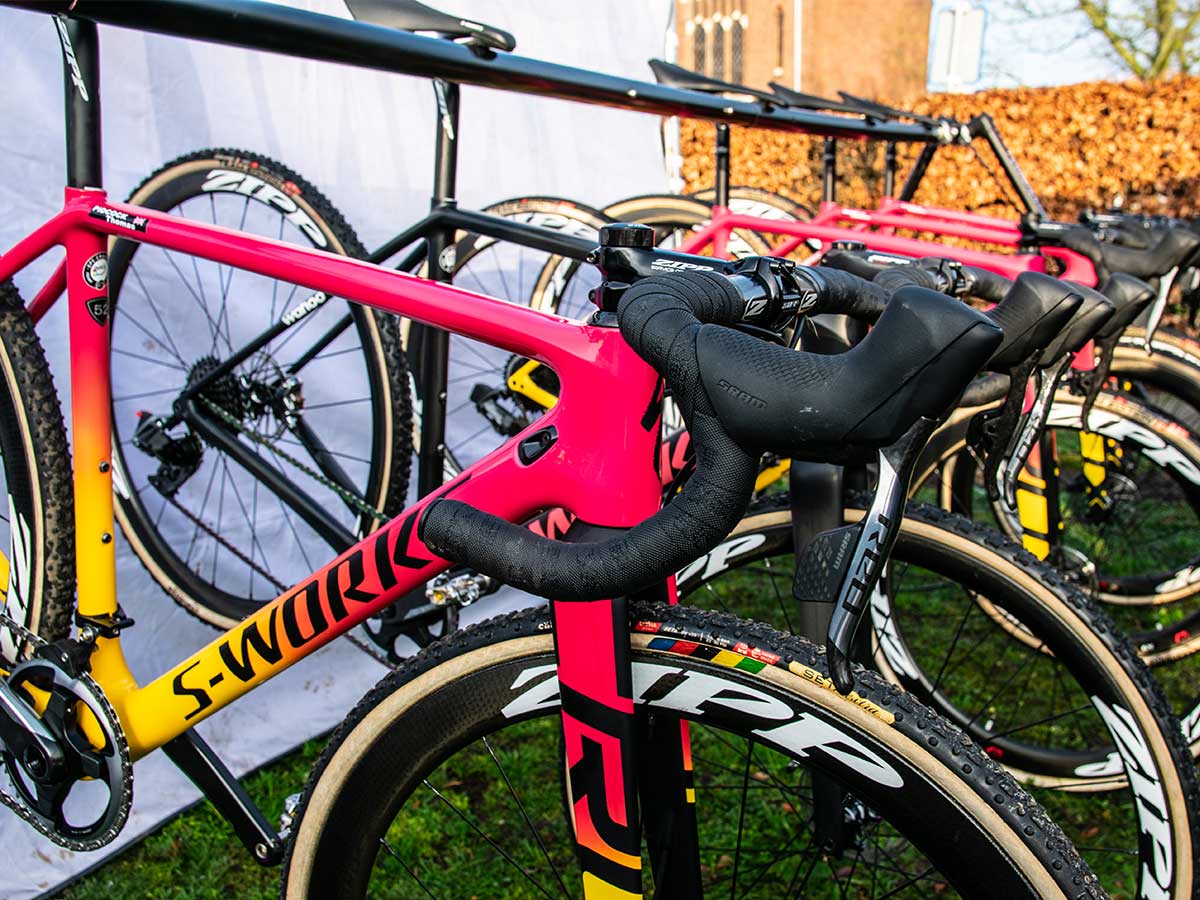
At first this seem a little obvious but there is far more to braking than simply pulling on the levers. Understanding how the brakes work will make you more confident when descending, cornering or riding in a group.
Your front brake is more effective than your rear and is the stopping brake. Your rear brake will slow the bike down and should be feathered (applied gradually). For more effective braking, rearrange your body to the back end of your bike slightly off the rear of your saddle so there is no chance of flying over the handlebars when the front brake is applied.
Observing the road ahead
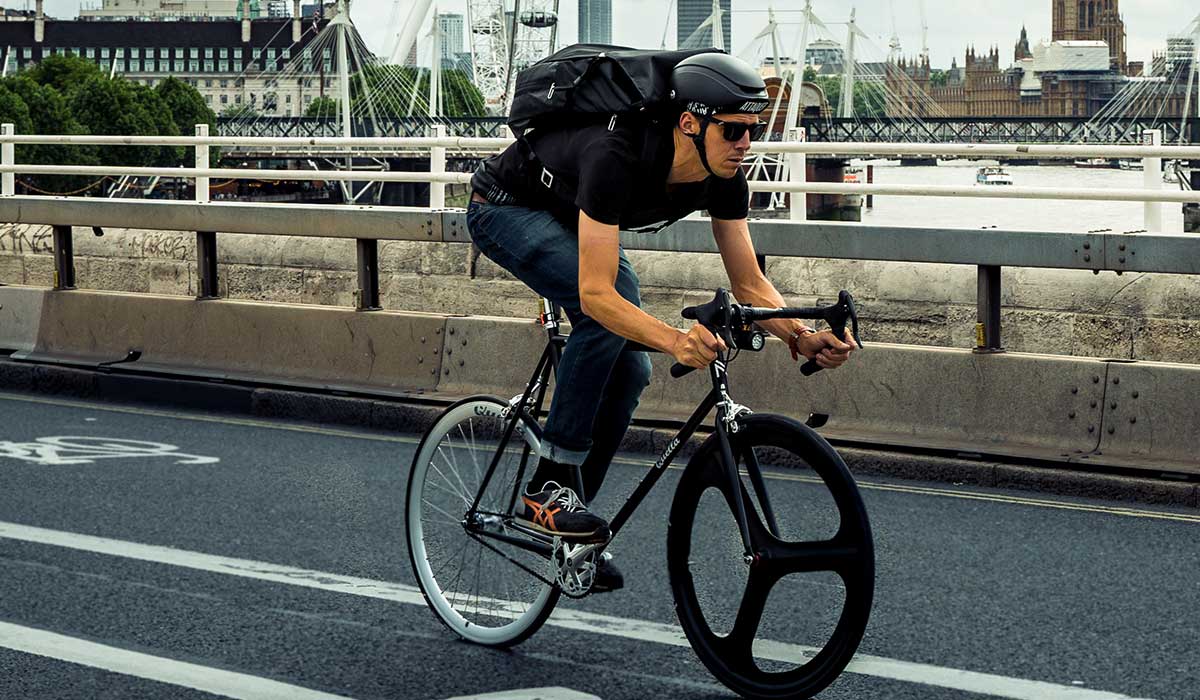
This skill will help you when it comes to cornering. Scan the road ahead of you and look for things that may pose a danger. This could be potholes, oil, loose surfaces or the actions of other people on the road, be they cyclist, motorist or pedestrian. The more you cycle, the more you will begin to learn and predict what other road users may do and the effects the sort of surface you are on may have on your cycling. Mastering this will make your rides safer.
If you are tackling descents in the mountains – lucky you! – then you’ll also benefit from casting you gaze higher and further ahead. See what the curvature of the terrain can tell you about the road coming up. If the tree line further below suddenly appears to jut out across the path of road, you know you have a tight corner coming.
Cornering
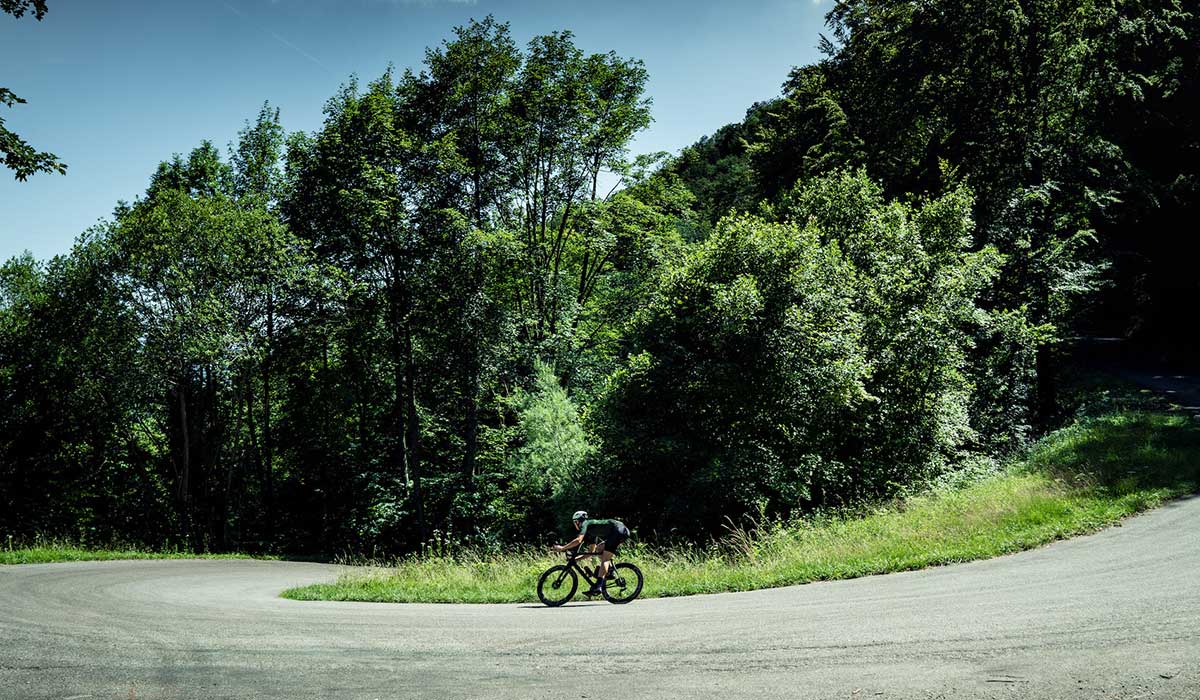
You can lose a lot of time in a corner by over-braking. The first thing to be mindful of – although it’s trickier to actually put into action – is looking through the corner. Riders do this because your bike will (generally) follow where your eyes are looking. Focus your weight on the outside leg (which will help you control the traction) and inside arm (which is how you control trajectory – if you need to make a tighter turn, apply more pressure).
If you are cycling in a group, let the wheel in front get away from you ever-so-slightly, so that you can avoid a hazard or the rider themselves if something goes wrong. By using your rear brake beforehand, then leaning into the corner, your momentum will carry, and you will find yourself back on your companion’s wheel in no time. Be mindful that in the wet or on loose surfaces, you will need to keep your bike more upright and your centre of gravity closer to the middle.
Riding out of the saddle
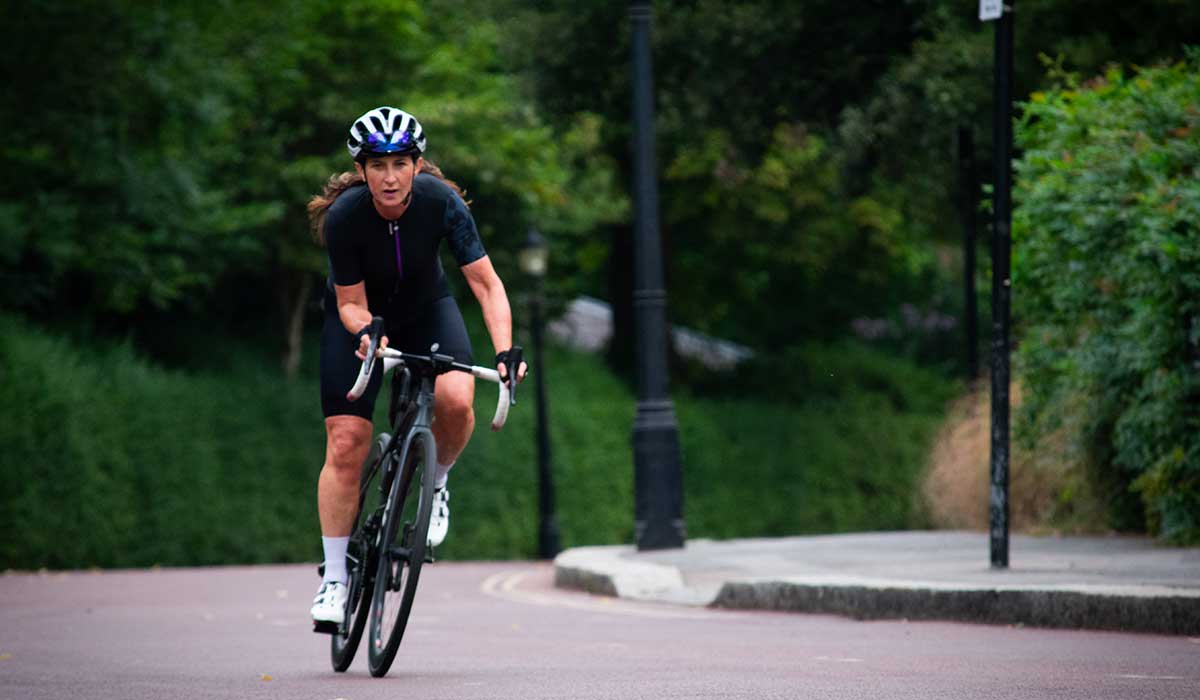
Climbing is one of the joys of cycling and riding out of the saddle helps you to get maximum power when climbing, or sprinting for that matter. This is because you are able to use your bodyweight, rather than just your leg muscles, to drive the pedals. You will be putting more power down so get into a higher gear beforehand to prevent you from spinning out (this tends to happen more in sprinting than climbing).
Put your hands on the hoods or drops and then lift yourself out of the saddle. Use your arms to then lever the bike from one side to the other.
Climbing while out of the saddle is more powerful but less efficient, and if you can you should try to stay seated. It’s better to be in an easier gear and sitting down than battling hard out of the saddle in a slightly tougher gear. When climbing on wet surfaces you’ll also want to stay seated, because placing your centre of gravity closer to the back of the bike reduces the chance of your back wheel losing purchase or ‘slipping out’.
Cycling in groups
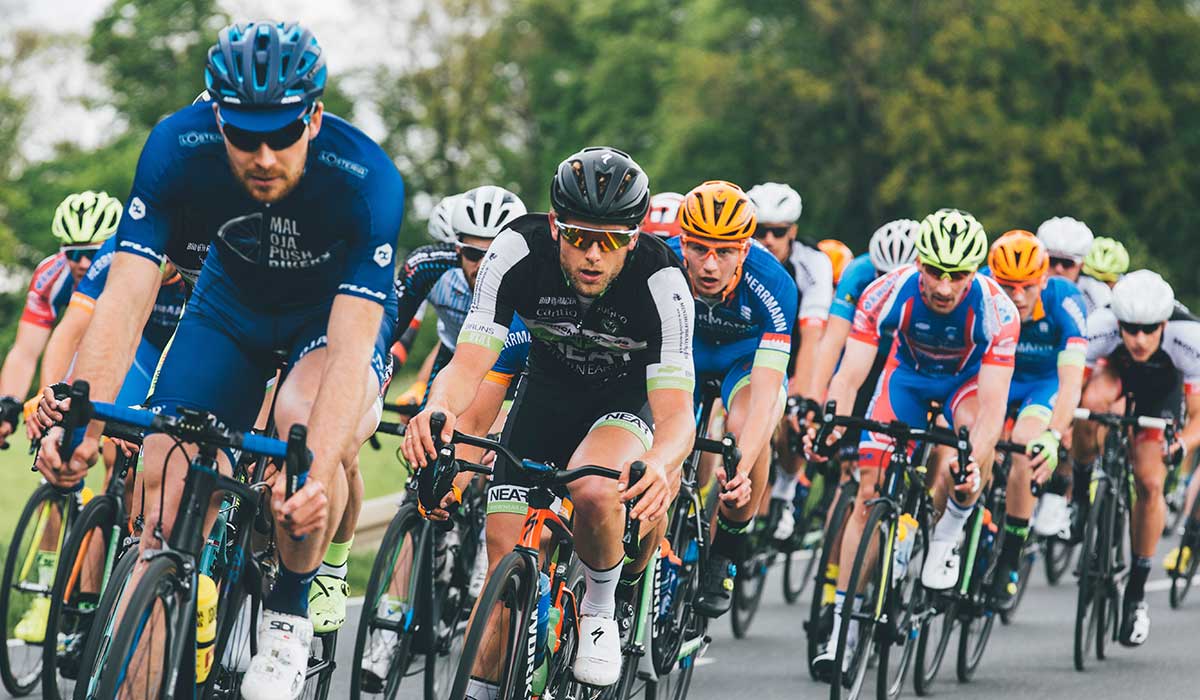
Learning this skill will allow you to ride further and also increase the social benefits of cycling. To learn it, ride in a group of trusted friends or ride mates and slowly begin to ride closer to one another. Once you have the hang of this start to bring hand signals and other group cycling etiquette into the mix. Our guide on cycling safely in a group covers all you need to know about etiquette and hand signals.
Drinking whilst cycling
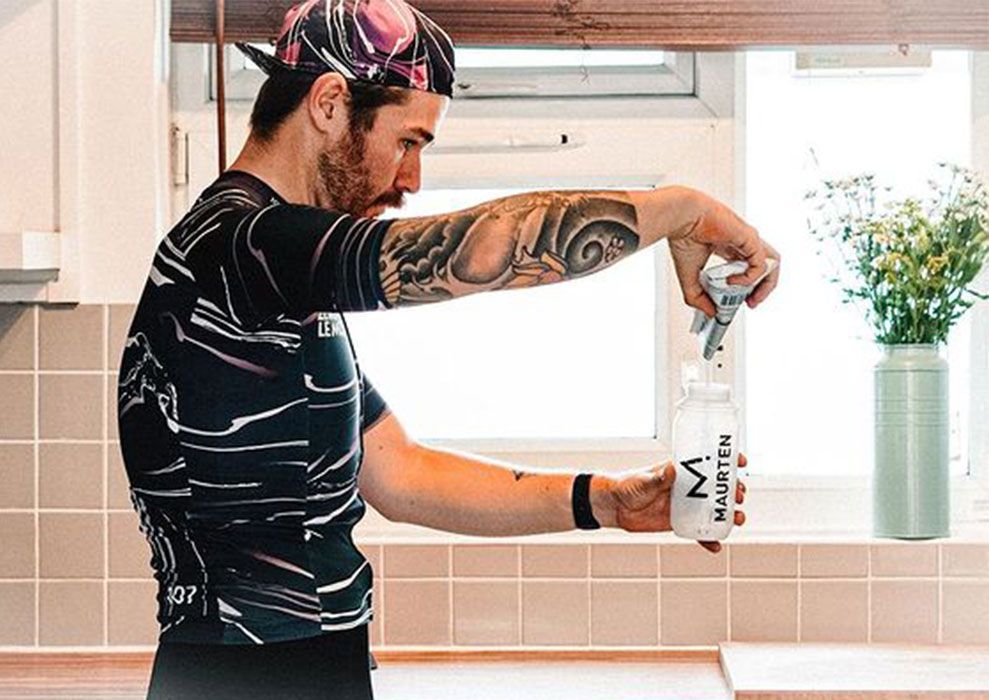
Riding one handed is a valuable skill, especially when it comes to drinking on the go and giving hand signals. Practice on a quiet piece of road, get up to speed and slowly begin to take your hand off your handlebars. As you grow in confidence, gradually leave your hand off the bars for longer amounts of time.
Next, with your eyes fixed on the road ahead, reach down and remove your bottle from its cage and then bring it up to your face to drink. Keep your eyes ahead when reaching back down to put the bottle back into the cage. This will also help you with the next couple of skills.
Eating whilst cycling
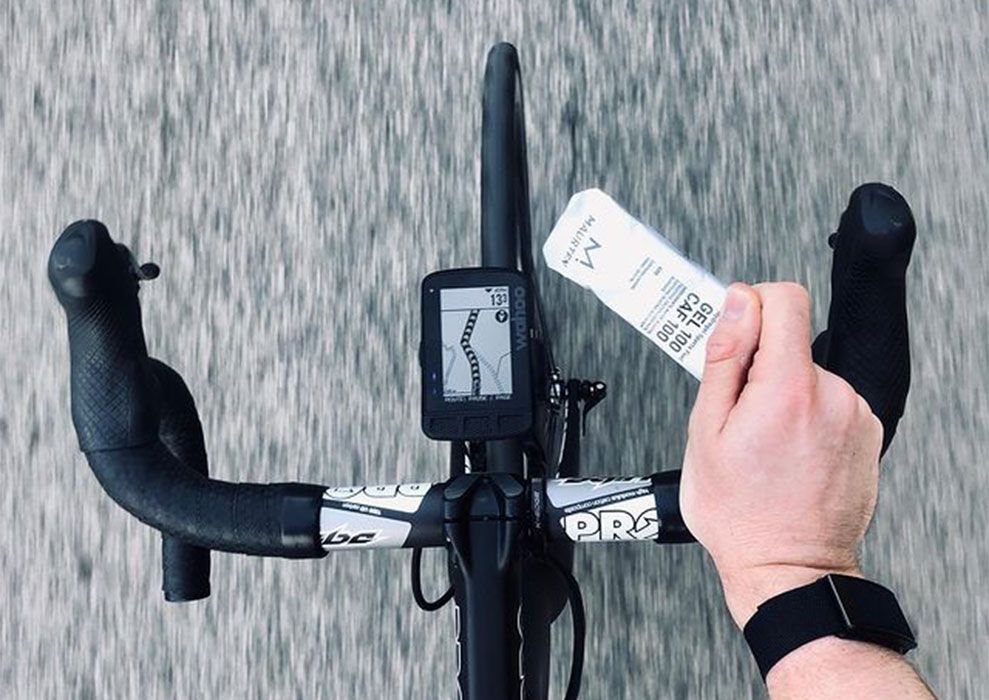
Eating whilst cycling is a key skill to learn because without it, the distance of your rides is fairly limited – at least, the distance you can ride before pulling over for a snack. You have to keep your energy levels topped up when riding, but this can be tricky when it is cold, and you are struggling to open your food’s wrapper while cycling.
Luckily, most energy gels and similar products have easy tearable openings that you can use with just your teeth. Use the same technique as drinking, first practicing on a quiet and familiar road. Bananas are about as close as nature has gotten to a perfect mid-ride energy food, which can be opened with just one hand – and one’s teeth.
We also have a very simple to follow tip for opening energy bars. Take the bar out of your back pocket with one hand and smack it vertically against the centre of your handlebars. This should create enough force for the bar to pierce the wrapper and pop out the end. From there keep your momentum forward and snack on the bar. Of course, you can always stop off at one of the UK’s Best Cycling Cafes too.
Changing clothes
This is an even trickier one to master as you will have to take both hands off the handlebars. Practice taking them off on a quiet bit of road. Keep pedalling as it will keep your momentum which in turn makes the wheel stay straight. Take your coat out and concentrate on the road ahead. Then in a fluid motion put one arm through at a time and then zip up. This will be difficult with a jacket, so practise first with a gilet. Don’t worry if you can’t do it straight away, this skill is hard to master. Just ask Team Sunweb’s Jai Hindley who nearly hit the deck when donning his cape on the Stelvio at the 2020 Giro d’Italia.
Oh dear 😳
— Eurosport UK (@Eurosport_UK) October 22, 2020
Jai Hindley almost crashes as he struggles to get his jacket on while climbing the Stelvio!
🇮🇹 #Giro d'Italia
📺 Eurosport 2
📱💻 Uninterrupted coverage: https://t.co/AUtaJcT3wU pic.twitter.com/v5qGUxVJu9
Mastering these skills will make you a more confident rider. Of course, protection will make you feel even more confident.
Pedalsure can insure all of your bikes and accessories and cover them even in your home. The fact is, you won’t find many of the things we cover in your typical home insurance policies. Taking out a policy with us means that your bike is protected in cases of bike theft and damage when you do choose to ride on the roads.
Pedalsure can also protect you, your bike and your accessories in mass participation events and races, in cases of personal injury, personal liability and when you are travelling abroad. Getting yourself set up with a Pedalsure policy is something you only have to do once a year, but you get the benefit with every ride.
